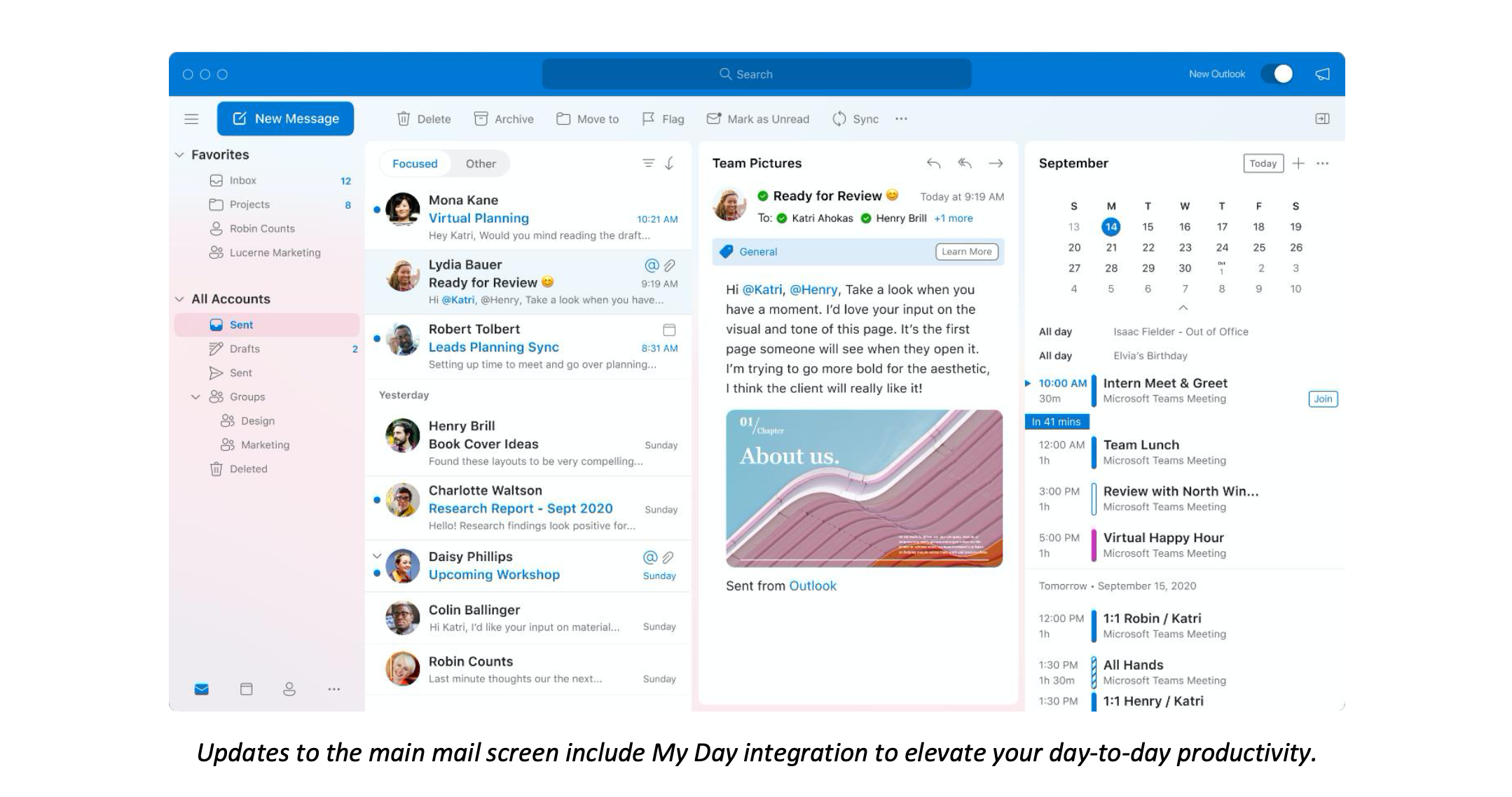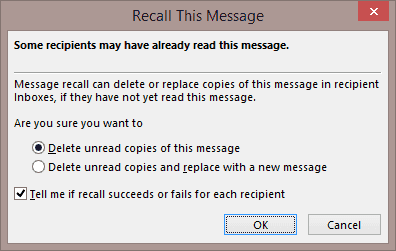

Clear the flag: Option + Command + Apostrophe (‘).Delete the email and close it: Command + Delete.Permanently delete the email: Shift + Delete.Mark selected email(s) unread: Shift + Command + T.Mark selected email(s) read: Command + T.Open the Spelling and Grammar check: Command + Colon (:).Save the email to the Drafts folder: Command + S.Copy the email to a folder: Shift + Command + C.Move the email to a folder: Shift + Command + M.Mark as Not Junk: Command + Shift + Option + J.Send and receive all emails: Control + Command + K.Send all Outbox emails: Shift + Command + K.Open the email in a new window: Command + O (capital letter “o”).Create a new folder: Shift + Command + N.You can keep your fingers on the keyboard and do things like compose a new email, mark one as junk, or move one to a folder. Minimize or expand the ribbon: Option + Command + R.Close the current active window: Command + W.Move backward through open windows: Shift + Command + Tilde.Move forward through open windows: Command + Tilde (~).In the Create Rule dialog, Under When I get e-mail with all of the selected conditions, check the condition box for this email. Then right-click on it and select Rules > CreateRule. Firstly, you should select an email which you want to move to specific folder. Open Outlook Preferences: Command + Comma (,) Automatically move email to folder by creating rule in Outlook.Show the previous Mail view pane: Shift + Control + Left bracket.Show the next Mail view pane: Shift + Control + Right bracket.Show the previous message: Control + Left bracket ([).Show the next message: Control + Right bracket (]).The Outlook window and viewsĬontrol your view, move through open windows, and check your settings with these keyboard shortcuts for the Outlook window. If so, these keyboard shortcuts for Outlook can have you organizing your inbox, sending and receiving emails, and formatting text quickly. You might prefer to use Outlook as your email app on Mac or simply use it for certain accounts or business. Now when you delete or file email messages, Outlook will automatically advance to the next most recent item.If you’ve been using the keyboard shortcuts we’ve listed for Microsoft Office apps like Word, Excel, and PowerPoint, then these shortcuts for Outlook are for you. In the dropdown menu, select “open the previous item.” Scroll down to the very bottom of the screen. In Outlook, go to the File tab and select Options. Or I can change Outlook’s default setting so that it moves up instead of down. To do that, I have to use the arrow keys or the mouse to navigate. For instance, in the example I’m using, I may begin reading with the email marked with the arrow below.Īfter I delete or file that message, Outlook automatically takes me to the message below it. However, mail I haven’t decided what to do with yet stays in my inbox until I have time to get to it.

If I had no other mail in my inbox, it wouldn’t be a problem. I start with the earliest one I haven’t read and then move forward in time toward the most recent message. After deleting or filing the first message, Outlook takes you to an earlier message.īut that’s not how I read my messages. Outlook assumes that you want to start reading the most recent message first.

My focus in this post will be changing a default setting in Outlook that affects the order in which Outlook shows you messages. It’s often the day-to-day kinds of activities where a little change can make a big difference. Fall quarter is in full-swing it’s time to share what’s new. It’s been a few months since I posted, and I’m emerging from my technology sabbatical.


 0 kommentar(er)
0 kommentar(er)
